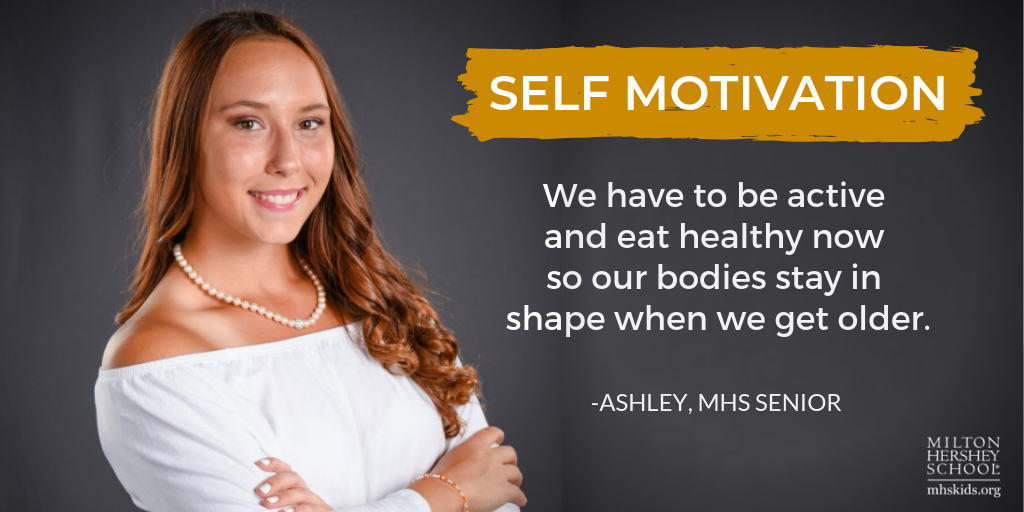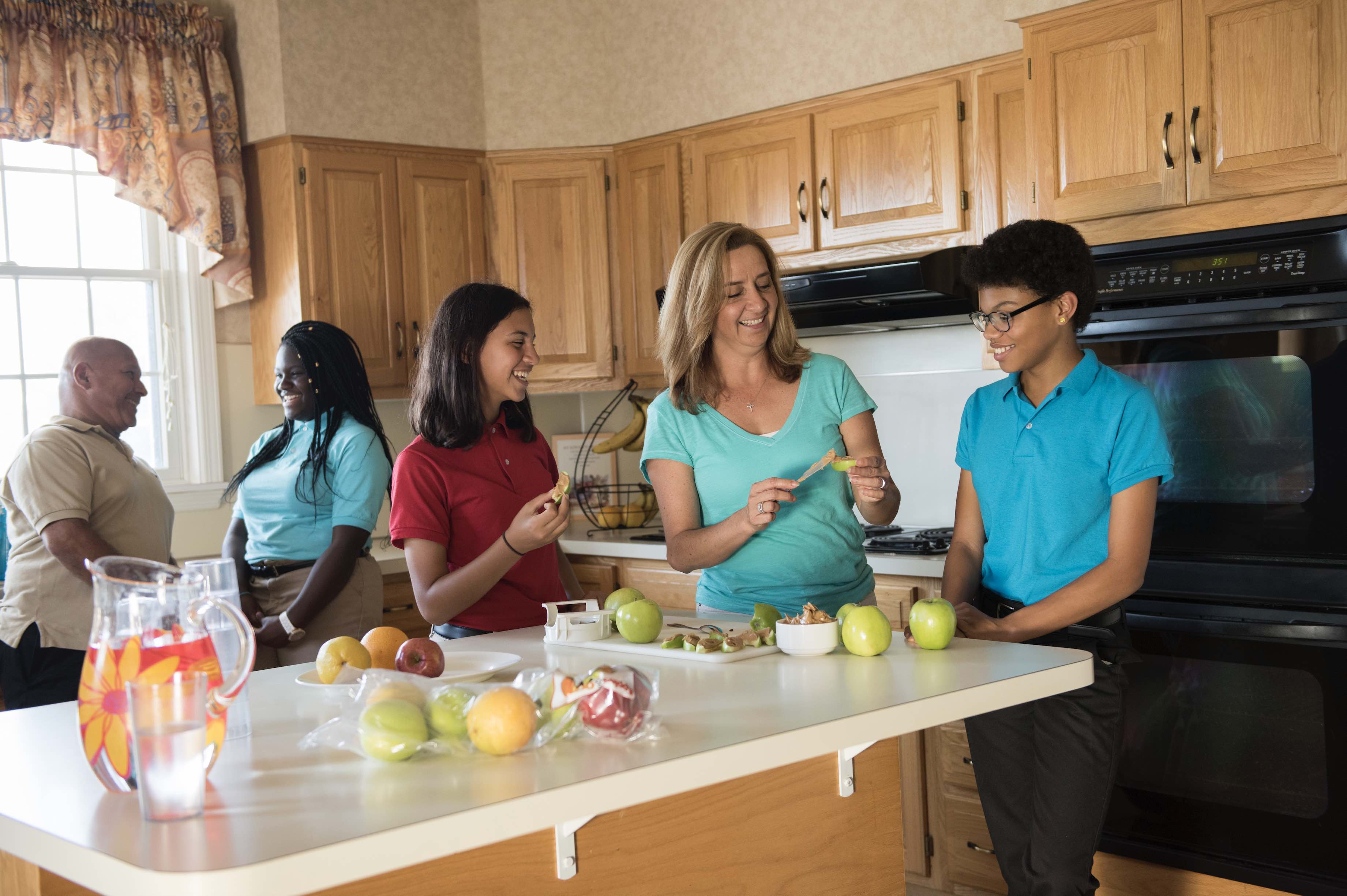How to Establish and Maintain a Long-Lasting Healthy Lifestyle
For adults, children, and teenagers alike, the benefits of establishing a healthy lifestyle are clear: reduced stress, increased energy, and a decreased chance of developing certain forms of cancer and diseases.
While the health benefits are obvious, maintaining a healthy lifestyle can be difficult when sedentary activities and on-the-go snacks are more convenient than the time it takes to cook nutritious meals and exercise consistently.
For Ashley, a senior at Milton Hershey School, her health and wellness journey began when she discovered her passion for sports.
“When I first came to MHS in fifth grade, I didn’t really know much about health and wellness,” she said. “But in seventh grade, I started playing field hockey and running track.”
While sports may have kickstarted her exercise routine, Ashley has found other ways to prioritize her health and wellness and stay self-motivated.
“Even when I’m not involved in sports, I make time after school to work out or make time on the weekends to go for a run,” she explained. “We have to be active and eat healthy now so our bodies stay in shape when we get older.”
By providing children with peer-to-peer support, skill-building, role modeling, and autonomy, students like Ashley can become intrinsically motivated to live a healthy lifestyle. Take a look at how we can work together to enhance self-motivation.
Encourage children and teens to have a “we” mentality.
Establishing a long-term health and wellness routine is most likely to be successful—and more fun—with a solid support system.
“Providing age-appropriate support from pre-kindergarten to 12th grade is key to helping each student create and maintain healthy lifestyle habits throughout their journey at MHS,” said Jamie Byerly, MHS Director of Nursing and Medical Services. “It also builds a strong foundation for the future.”
If a child sees someone their age making a deliberate choice to try a healthy food or participate in a new activity, it can spark internal motivation to adjust their own habits. In Ashley’s apartment-style living environment on the MHS campus, she’s learning how to live independently, manage a budget, and make healthy choices. These choices feel less daunting and more exciting when she has the support and loyalty of her peers.
“I make kale chips for myself and my friends, and we’ve started buying healthier items like broccoli, peppers and spinach,” she said.
As she steps up as a student leader and shares healthy habits with others, Ashley remains empathetic toward her peers. “If you’re not the fastest runner during gym class, you don’t have to be. Your friends are still there supporting you,” she added.
Understanding one another’s emotions, and encouraging each other to achieve individual wellness goals, can help teenagers develop a “we” mentality and a sense of ownership for helping their peers stay healthy.
Help students develop confidence and competence.
Sometimes, the most self-motivating goals are the short-term ones. As children master new skills and become competent at physical activities, their newfound sense of confidence can be a great motivator for long-term health and wellness.
“The biggest change we see when a student is successful at forming healthy habits is that they feel good. That’s the best motivation to continue living a healthy lifestyle,” said Byerly. “There are so many long-term benefits, but kids and teenagers are often motivated by the “now.” Feeling good is a great motivator.”
For Ashley, her long-term motivation involves playing field hockey at the collegiate level. To achieve that goal, she focuses on the small, everyday steps that help her feel confident each day.
“I’m playing field hockey at Millersville University next year, and I know when it’s time for pre-season, it’s going to be really challenging,” she shared. “I’m trying to prepare my body for that. I have to start working out and eating healthy now, and I have a daily routine of push-ups and sit-ups.”
Every child’s motivation is different, and developing a long-lasting routine won’t happen overnight. Empowerment starts with becoming competent at the small parts of an even bigger goal.
Provide children with individualized support and positive role models.
Goal-setting and skill-building are essential to developing a healthy lifestyle, but without a positive role model, individuals can lack the motivation to put their skills to the test.
“Establishing healthy lifestyles can be challenging at times. At MHS, we provide solid support and encouragement that can make all the difference,” Byerly shared. “When we have positive role models, we see people who are like ourselves that have successfully established healthy habits. Our role models give us confidence in our own abilities to do the same.”
Whether it’s an athletic coach, family member, or older sibling who enjoys a similar activity, students benefit from adults who take the time to model healthy habits and exercise alongside them.
Give teens the power of choice and autonomy.
When it comes to nutrition and physical fitness, providing children and teens with autonomy can be a powerful motivator. At Milton Hershey School, high school seniors can choose from activities like yoga, dodgeball, dance, or exercise videos. They can also decide whether they want to exercise outside, visit a local gym, or use on-campus fitness facilities.
“Being able to pick and choose between activities lets us do something we want to do and have fun,” Ashley shared.
The power of choice not only makes physical fitness more enjoyable for students, but it helps them develop a personal connection to certain activities and food groups.
“Students are able to increase their knowledge about healthy lifestyles through interactions with health services, health and physical education, afterschool programs, and so much more,” Byerly shared. “Students then have opportunities to put that knowledge into practice. They have options to try a variety of foods from all five food groups, select their own healthy snacks, and genuinely have fun being active.”
When students discover an activity or food group that excites them, they become more intrinsically motivated to incorporate this habit into their daily routine. When you add support from their peers, self-confidence, and positive mentorship, children and teens have every ingredient they need to establish a long-lasting healthy lifestyle.






